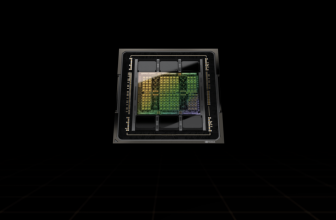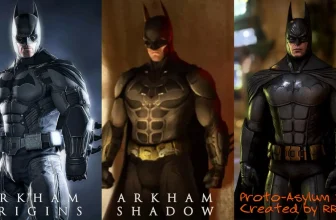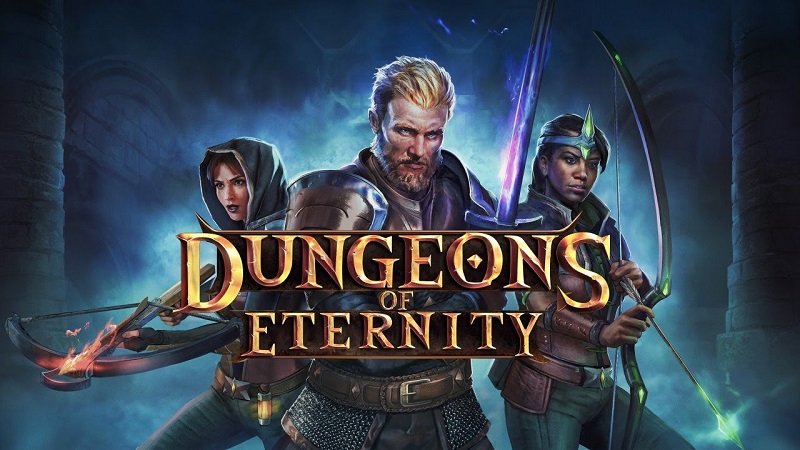
Carving out a unique position and creating a well-developed VR game can be a challenging endeavor. One such game attempting this feat is Dungeons of Eternity, a VR dungeon crawler created by the team at Othergate. When I first came across the game trailer, it seemed like a typical dungeon crawler that didn’t particularly excite me or the rest of the 6DOF Team. However, we all know that trailers don’t always reveal the full picture, and ultimately, a game can still be incredible if it has solid mechanics and execution. So, with cautious optimism, I put on my VR headset and embarked on an adventure in the world of Planet Eternity.
I must acknowledge the credit where it is due, Dungeons of Eternity presents itself impressively with a polished presentation and a fascinating blend of science fiction and fantasy. The map room, with its luxurious design, serves as a place for adventurers to plan their next journey, while the cozy lounge offers a peaceful atmosphere by the fireplace for companions to enjoy serene moments. It is evident that Dungeons of Eternity was meticulously created with careful consideration for every detail.
Othergate entices players in a genre that is filled with quickly made games. It promises a one-of-a-kind and ever-changing adventure that combines fantasy and science fiction, with the potential to revolutionize the world of VR dungeon crawlers.
Crawling Through Eternity
The gameplay mechanics are what make a dungeon crawler great, and in the case of Dungeons of Eternity, they certainly deliver. Players can create their own unique characters and choose from a wide variety of equipment and power-ups to enhance their abilities.
The game’s melee combat system is definitely impressive. Dungeons of Eternity excels in this aspect, avoiding the mistakes made by other games like Everslaught Invasion. The weapons feel satisfyingly heavy, interactions with objects are convincingly realistic, and successfully parrying attacks is possible.
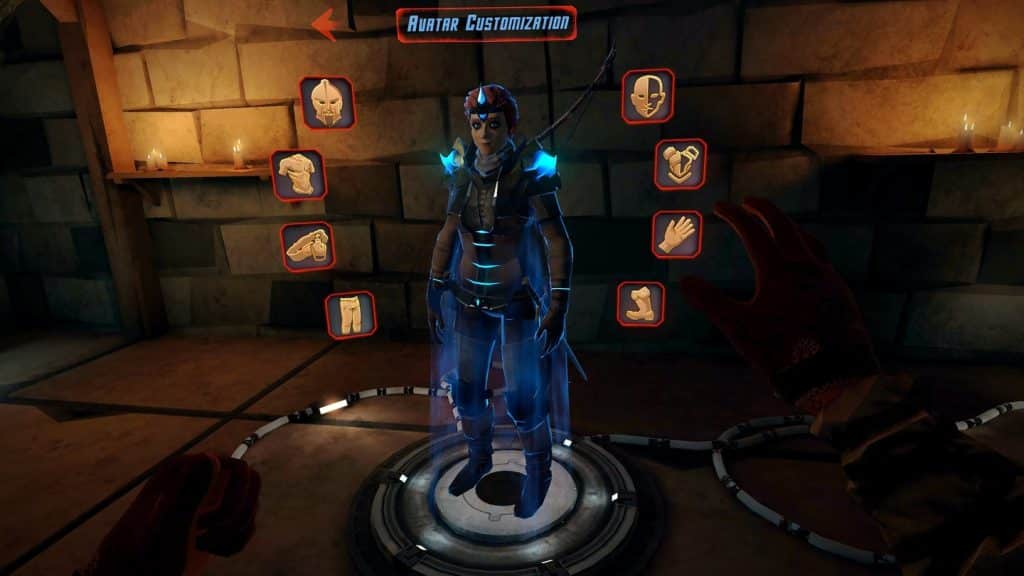
While the game offers various playstyles including melee weapons, ranged weapons, and magic, my personal experience was that initially, you are only provided with melee weapons and a bow. To obtain magical weapons, some grinding is required. This game design choice is interesting because it restricts new players from having a diverse range of classes when entering dungeons. In reality, there are no specific classes in the game, rather your abilities are determined by your actions. At least in the beginning, being a mage is not an option.
If you want to truly experience the essence of playing Gauntlet with friends in VR, it is recommended to play the game in multiplayer. While it can be played single-player, the multiplayer mode offers higher stakes, more enemies, and increased enjoyment through the presence of others whose company you enjoy.
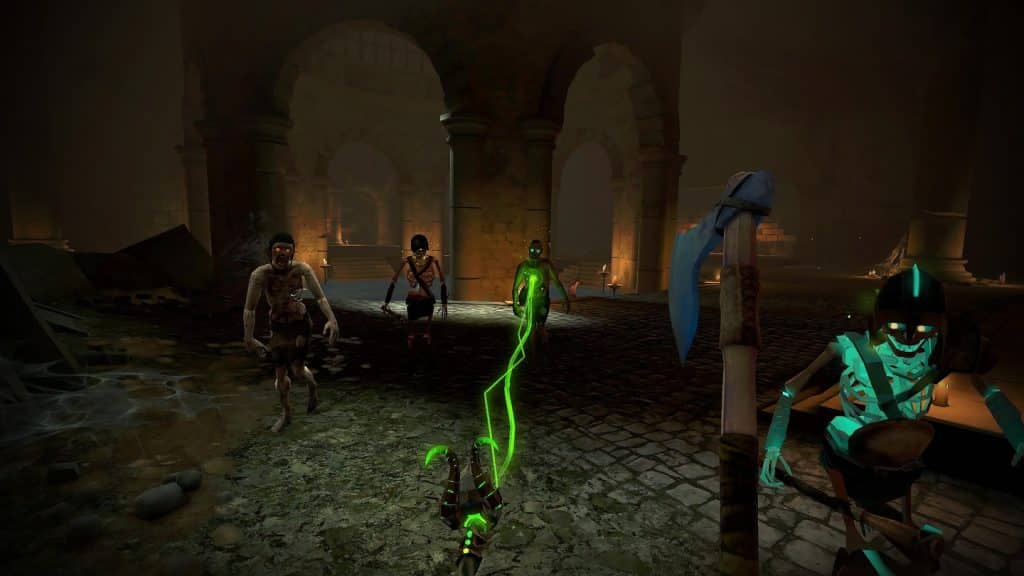
There are three different quest types; Dungeon Raid, where you have to traverse a dungeon to find, power up, and retrieve a drone that’s been lost, Crystal Hunt, which has you in a pyramidal structure hunting for three crystals that’ll power up a smaller pyramid at its center, giving you points you can use to buy perks, and Soul Harvest, which is essentially a horde mode and the least entertaining mode of the bunch.
Upon release, the Dungeons of Eternity provides a total of 12 dungeons, excluding the tutorial, which are categorized into various areas or themes. While this does introduce some diversity in the gameplay, a few of the areas bear resemblance to each other, lacking a truly distinct feel.
Visual Vaults
Despite the generic dungeons and creatures that are on offer once you get past the sci-fi framing of the game, Dungeons of Eternity is a really good-looking game by Quest standards. The graphics are atmospheric, with real-time lighting, some nice particle effects, and good textures. The overall look of the game is very good, and the enemies, although they remain mostly generic are well designed and well rendered, if lacking in variety.
Eternal Echoes
The audio in Dungeons of Eternity is decent yet not particularly outstanding. Occasionally, appropriate music plays to enhance the overall atmosphere. However, the true highlight lies in the sound effects for the weapons, such as the realistic clangs of metal colliding and the spatial audio which assists in reacting swiftly to attacks or defending against enemies approaching from behind. This aspect functions effectively and successfully.
Pitfalls of Perpetuity
What could possibly go wrong with excellent graphics, impressive physics, satisfactory combat, and the chance to explore dungeons alongside friends?
As stated earlier, there are just three game modes available. Unfortunately, one of them is a dreadfully dull horde mode that I doubt many players would find enjoyable.
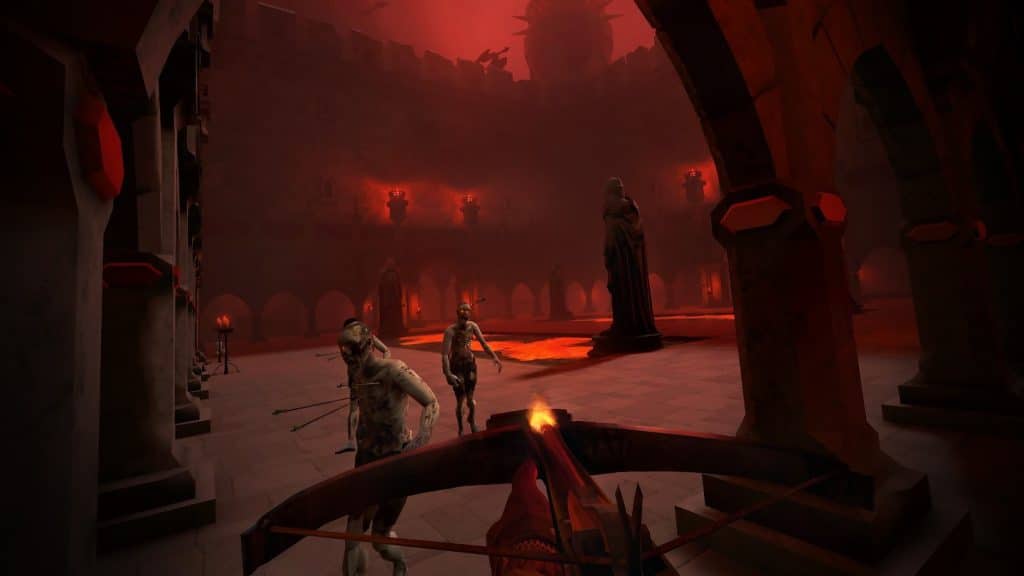
Another issue is the lack of character classes. Although this might initially seem okay, since you can increasingly customize your character and their load-outs and perks as you unlock more and more of the game, it also means that fresh players cannot play a mage, for instance. Magic is mostly staff-based, so it amounts to you becoming a shooter, and it’s only unlocked later on, which means that fresh gamers coming in can’t have a magician as part of their party of three.
The game’s content suffers from a lack of distinctiveness. The four areas or themes are not noticeably different from each other, which makes me think that Othergate missed an opportunity to incorporate more sci-fi elements into one or two themes to make them stand out. As it is, the dungeons all feel very similar. When combined with the monotonous horde mode levels, the overall value of the content decreases.
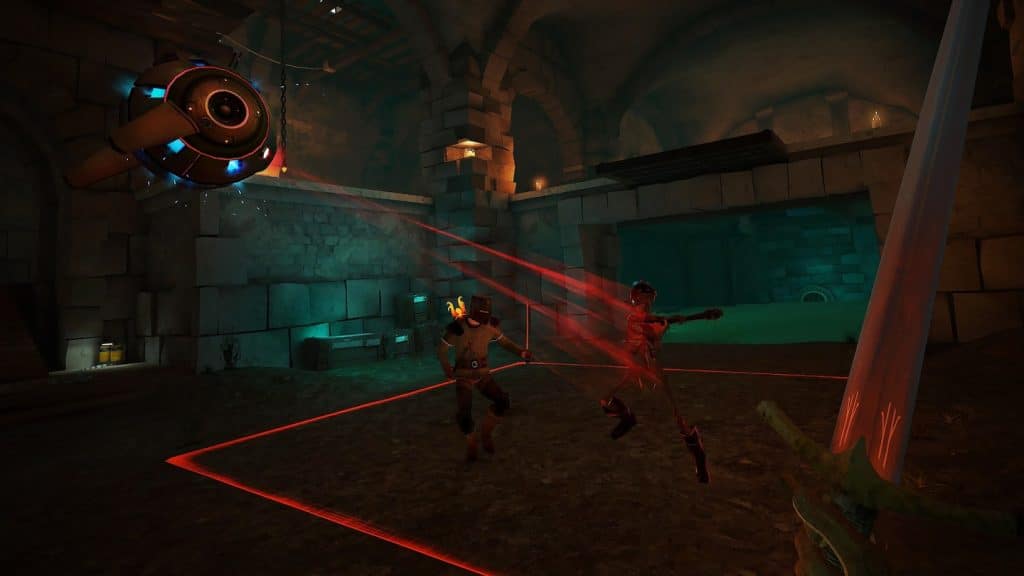
Lastly, the single-player mode does not provide much of a challenge. Whenever I played the game by myself, I easily completed the Dungeon Raid levels without much effort. There are an excessive amount of health potions, insufficient enemies, and overall lack of difficulty. The game should find a way to engage and challenge individual players, even if it was not primarily designed for single-player gameplay.
End of Infinity
Dungeons of Eternity provides a strong basis for a potential multiplayer adventure. Currently, it is the only game on Quest that allows players to explore dungeons with friends in VR. However, the novelty may fade if Othergate does not expand on this foundation by adding more thrilling quests and diverse adversaries.
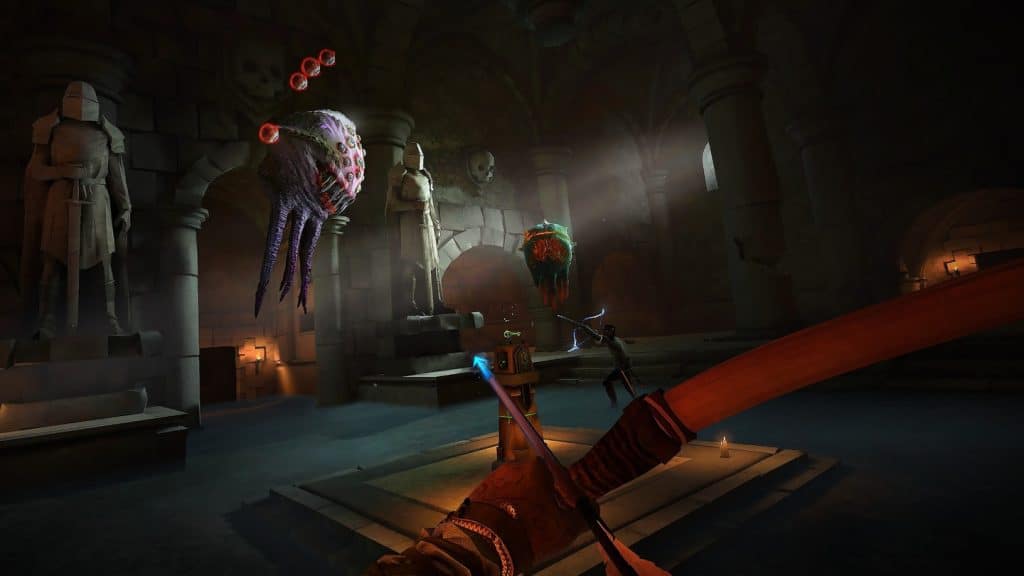
I believe that adding a longer mode with a compelling storyline, where players explore multiple dungeons with a more engaging narrative rather than just “saving the fallen drone,” would greatly enhance the game and make it more recommendable.
Currently, it is not essential to have, but it will offer some enjoyment and value to older players who reminisce about the Gauntlet era and are not bothered by the generic content and limited options available.




